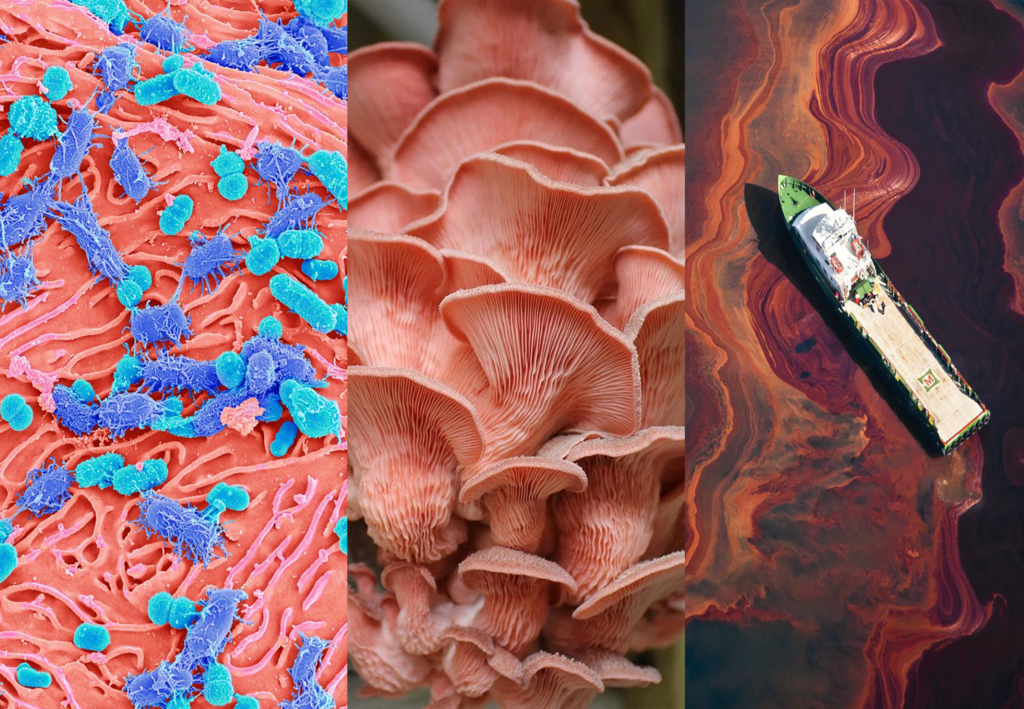
By Hunter Marion.
Remediation is the process of removing pollutants from the soil or water of a contaminated location and return it to a healthy state. This process is the desired goal for most environmental endeavors. However, remediation is usually a difficult, dissatisfactory process whereby state or federal government (or their contractors) bungle, delay, or quit during it. Traditional remediation efforts can have big flaws: pollutants or contaminated soils may be relocated to a nearby landfill; chemical wastes from heavy machinery might mix in with the present toxins; or funding could quickly dry up.
One alternative to traditional remediation that is seeing a resurgence of attention among the scientific community is natural remediation. Natural remediation applies living organisms to the clean-up process. It is usually cheaper, less intensive, can be managed by private citizens instead of government actors, and is, obviously, more natural. Two natural remediation processes that are becoming more popular are bioremediation and mycoremediation.
Bioremediation is the process of using microbes to “detoxify contaminants in the soil and other environments.” Certain microbes (usually bacteria) can consume pollutants and convert them into harmless chemical compounds like carbon dioxide or water. Even pollutants previously thought to be irremediable like plastic and oil have been found to be vulnerable to bioremediation. For instance, recent research has found that certain bacteria can “degrade between 50% and 60% of [automobile] fuel in a few weeks,” convert mercury to non-harmful chemicals, consume plastics at the bottom of the ocean, and even thrive within oil spills.
How this works: remediators introduce a microbe into the soil or water via in situ (on-site) or ex situ (off-site) methods. This can be by heating and mixing the microbes into the soil via an aboveground “bioreactor”; pumping air into spaces filled with waste to cultivate bacterial growth; or by creating a “biofilter,” a culture of microbes applied to a biomass (wood or peat moss) which feeds on airborne pollutants. Each method must be finely tuned to each specific pollutant, environment, climate, etc., or else the process runs the risk of either not removing or inefficiently negating the pollutants. Thus, bioremediation can require more maintenance and attention than traditional remediation methods. However, bioremediation has been shown to be more promising in the long run than some traditional remediation methods.
Alternately, mycoremediation is the removal of pollutants via fungi (mushrooms). Some fungi, using their mycelium (fungal root system), can absorb, degrade, and convert environmental toxins into nonharmful chemicals. Specific mushrooms can also absorb the toxins and store them in less dangerous forms inside their fruiting bodies (or caps). For these mushrooms, remediators would need to compost them and reintroduce them into a new generation of growth (doing this repeatedly can remove most toxins).
Mycoremediation has already been effectively applied to wildfire burn zones in California and oil spills in Ecuador. In one study, oyster mushrooms (Pleurotus sp.) were found to be capable of neutralizing or absorbing significant quantities of toxins within their fruiting bodies. Another study found that fungi could remove nearly all toxic products applied to it. However, researchers have yet to find unanimous evidence that heavy metals can be effectively removed by mycoremediation. Despite the lack of extensive research, mycoremediation practices have a solid foundation so far and are quickly becoming a common alternative amongst local organizations. Like the fungi they work with, hundreds of mycoremediation organizations, research teams, and companies are popping up all over the country. All convinced that fungi (and microbes too) are the best, least expensive solution to their environmental issues.
It should be noted that bio- and mycoremediation are not new methods. In fact, the EPA has even tested these methods under the Superfund Innovative Technology Evaluation (SITE) Program from 1989 to 2005. The purpose of SITE was to experiment with alternative remediation technologies and techniques upon existing Superfund sites and to document their progress (or lack thereof). Sadly, the SITE program was terminated, and with it ended most federally sponsored testing. Since then, natural remediation has been almost strictly within the purview of citizen science groups and local clean-up organizations. But maybe this resurgence in natural remediation methods could help elevate governmental application once again?
